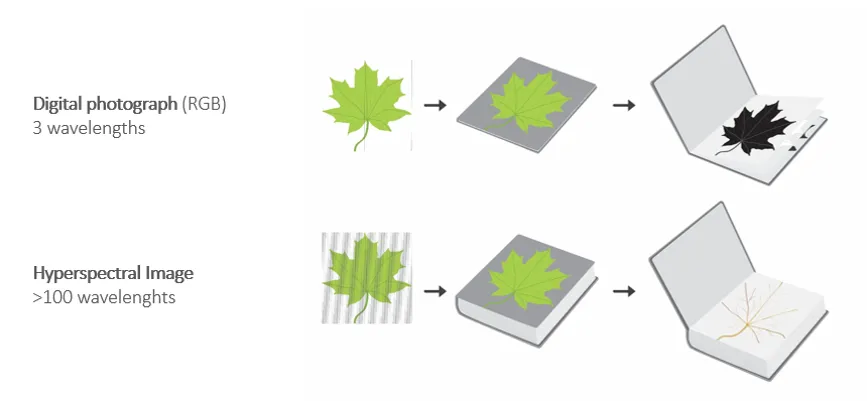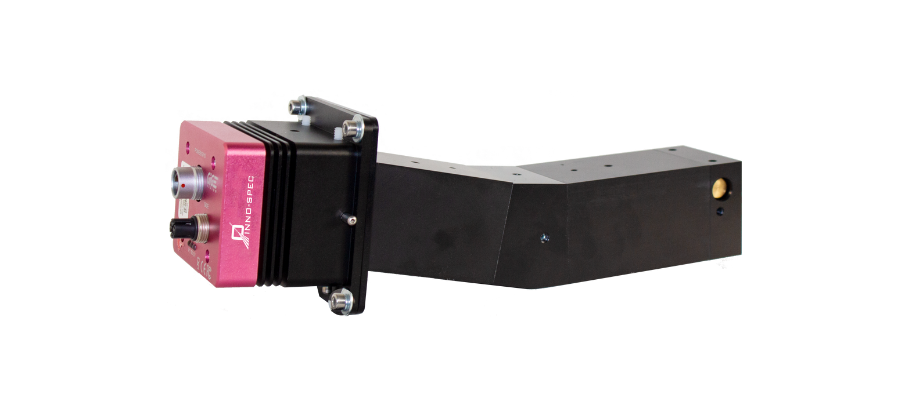Hyperspectral Cameras
Small size, extensive measuring range, ultra-large measuring angle, high repeatability.

Hyperspectral Cameras
Hyperspectral cameras are advanced imaging devices designed to capture and process information across a broad range of wavelengths within the electromagnetic spectrum. Unlike traditional cameras that record colors as three distinct channels (red, green, and blue), hyperspectral cameras break down the spectrum into numerous narrow and contiguous bands, allowing for detailed spectral analysis. These cameras can capture not only the visible spectrum but also extend into infrared and sometimes ultraviolet regions, providing a wealth of data about the composition and characteristics of the imaged scene. This capability makes hyperspectral cameras invaluable in various fields, including agriculture, environmental monitoring, remote sensing, and medical diagnostics, where the detailed spectral information helps identify and differentiate materials or conditions that may go unnoticed with conventional imaging systems.
- Wide Spectrum Coverage
- Multispectral Capability
- Versatility
How it works ?

Figure 1. Hyperspectral imaging captures wavelengths from 250 nm to 15,000 nm and thermal infrared.
Hyperspectral imaging is a technique that captures and processes information across the electromagnetic spectrum, obtaining the spectrum for each pixel in an image. This enables the identification of objects and materials based on their distinct spectral signatures. Applications of hyperspectral imaging include assessing food quality and safety, waste sorting and recycling, as well as control and monitoring in pharmaceutical production.
The electromagnetic spectrum encompasses various types of light, from radio waves to gamma rays, extending beyond the range visible to the human eye (Figure 1).
Spectral imaging involves using multiple bands across the electromagnetic spectrum. While an RGB camera utilizes three visible light bands (red, green, and blue) for image creation, hyperspectral imagery explores interactions with a broader range of bands, from 250 nm to 15,000 nm and thermal infrared. The examination of light-matter interaction falls under spectroscopy or spectral sensing.

Figure 2. A digital photo of a leaf (top) is generated using three bands: red, green, and blue, akin to a three-page pamphlet in RGB data. Also, a hyperspectral image of a leaf (bottom) captures a spectral response across 220 wavelengths.
In replicating human vision, a digital photo of a leaf (top) is generated using three bands: red, green, and blue, akin to a three-page pamphlet in RGB data. Conversely, a hyperspectral image of a leaf (bottom) captures a spectral response across 220 wavelengths. The equivalent of a 220-page book, it contains significantly more detailed information about the object.
A hyperspectral imaging system analyzes spectral responses to identify and categorize features or objects in images according to their distinct spectra. By integrating the advantages of digital imaging and a spectrometer, hyperspectral imaging furnishes both spatial and spectral insights into the physical and chemical properties of the object. The spectral data facilitates the identification and classification of materials, while the spatial information offers details about the material’s distribution and areal separation. Hyperspectral imaging addresses inquiries regarding “what” (based on the spectrum), “where” (based on location), and “when.”

Figure 3. Comparison of different imaging type.
Hyperspectral imaging stands out for its exceptional spatial and spectral resolution, facilitating in-depth material characterization. Utilizing a hyperspectral camera, the system measures thousands or even hundreds of thousands of spectra, constructing an extensive hyperspectral data cube that includes positional, wavelength, and time-related details. In contrast to multispectral imaging, hyperspectral technology offers a wealth of information, enabling more precise analysis, identification, and differentiation of materials and substances. This capability allows for distinguishing between materials with similar physical or visual traits and detecting substances beyond the range of human vision, such as various minerals.
Applications

Aerospace

Agriculture

Food Processing

Process Control

Recycle










